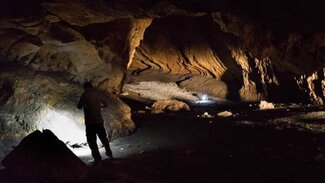Controversial Solution to 70,000 Year Old Mystery Challenges Previous Understandings Of Ancient Human Expansion
A new solution to the 70,000-year-old mystery is challenging previous understandings of ancient human expansion across the globe.
The Debrief 8:09 pm on April 10, 2024

A new study suggests that modern humans may have remained as a homogeneous population in the Persian Plateau for over 2,000 years before expanding into different regions of the world around 7,000 years ago. Genetic, archaeological, and paleoecological data support this theory, indicating that the Persian Plateau was conducive to long-term human habitation.
- A new study proposes that humanity existed as a single homogeneous population in the Persia Plateau for millennia before expanding globally.
- Genetic, archaeological, and paleoecological data support this theory, suggesting that the Persian Plateau was conducive to long-term human habitation.
- Evidence from modern populations and ancient DNA found in the region connects them to an original hub population that left Africa around 7,000 years ago.
- The Persian Plateau provides crucial clues for understanding the demographic history of Homo sapiens across Eurasia and Oceania.
- The multidisciplinary study offers insights into the critical period between the Out of Africa expansion and the differentiation of Eurasian populations, underlining the need for further archaeological explorations.
https://thedebrief.org/controversial-solution-to-70000-year-old-mystery-challenges-previous-understandings-of-ancient-human-expansion/